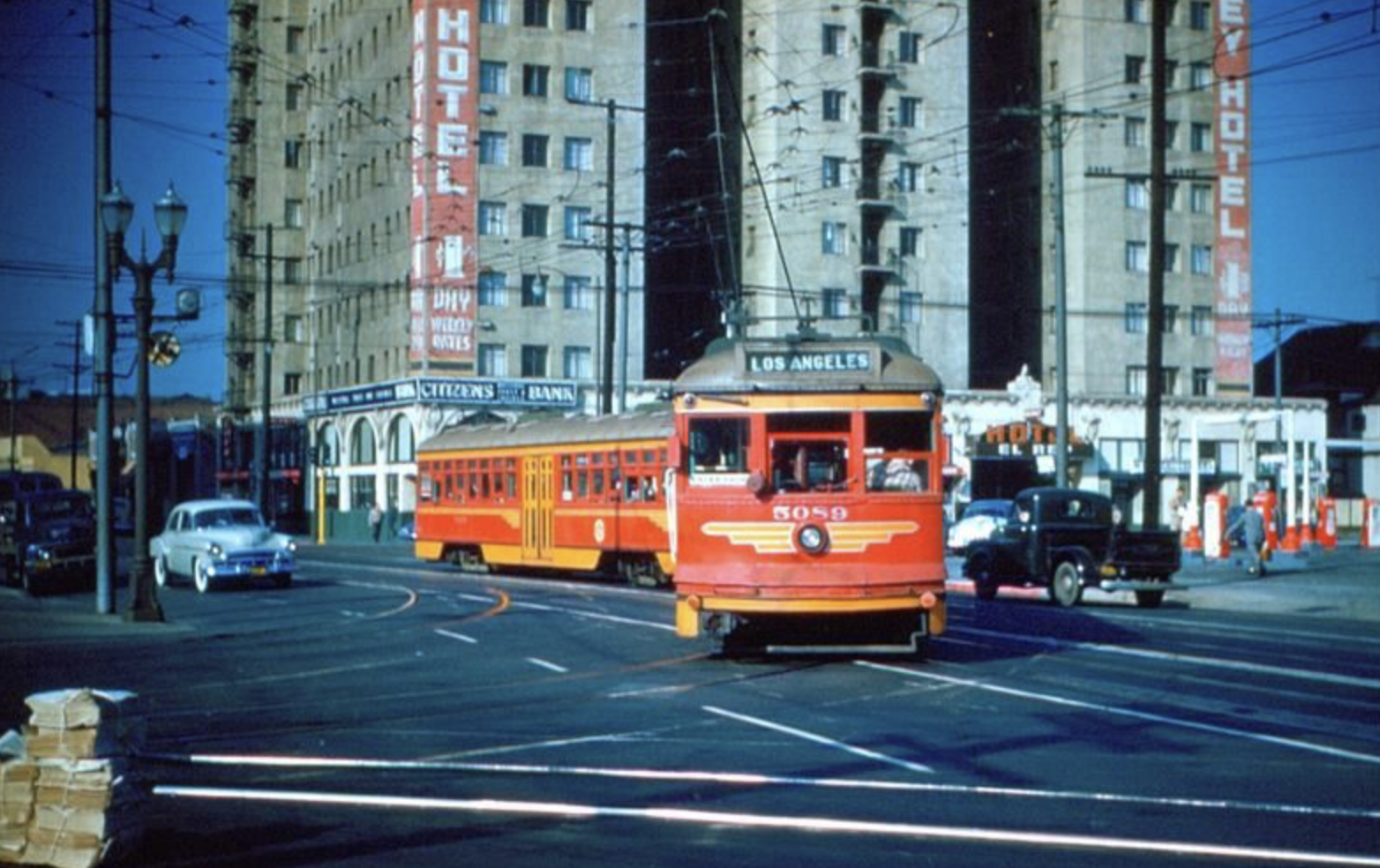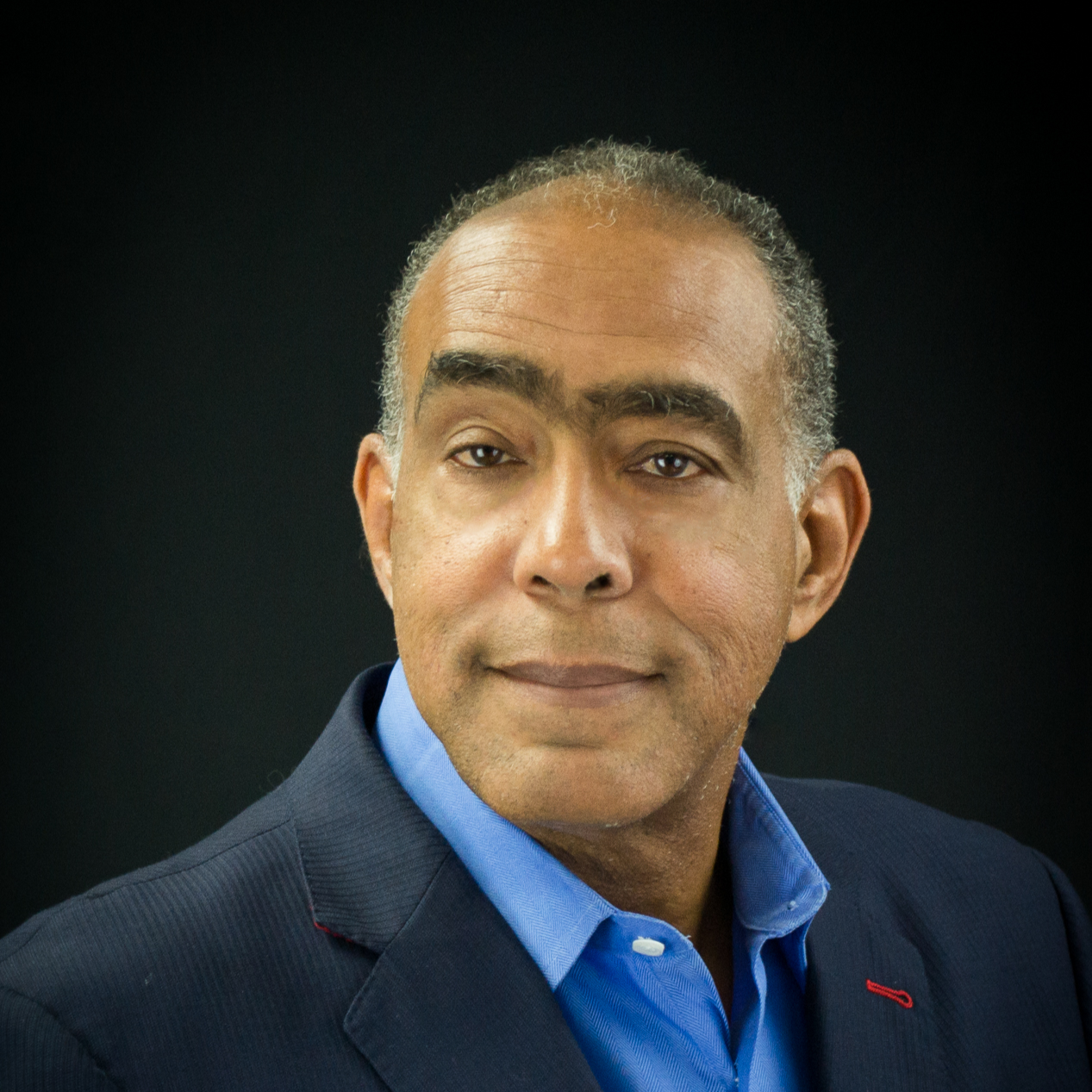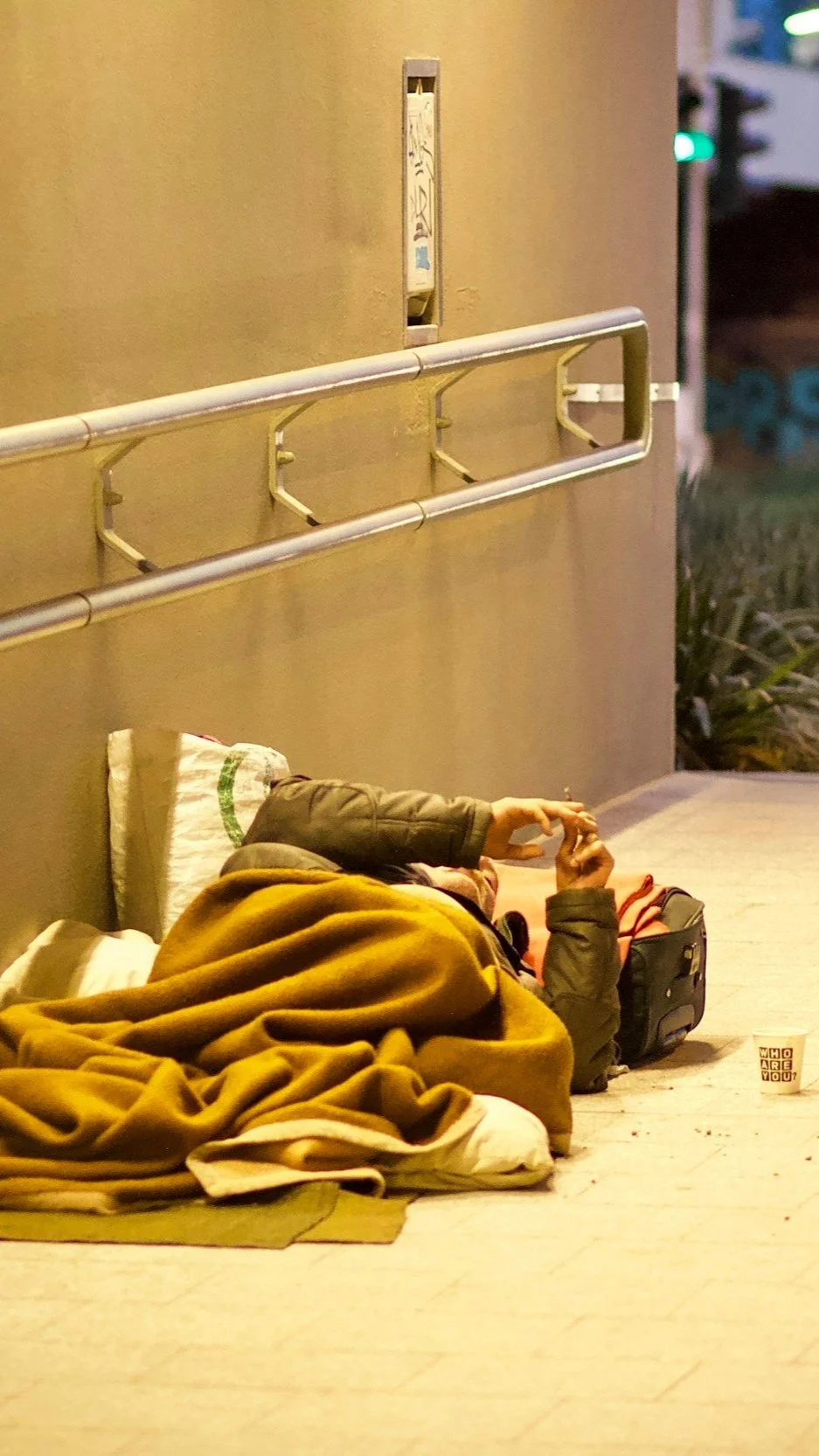
THE HISTORY OF WEINGART CENTER
A Legacy of Empowerment and Transformation
For decades, Weingart Center has stood as a beacon of hope and transformation in Los Angeles, dedicated to empowering individuals experiencing homelessness to reclaim their lives.
This page traces Weingart Center’s evolution—from its origins and historic milestones to its present-day impact—while highlighting the visionaries guiding its mission today.
Senator Kevin Murray
President & CEO
Tonja Boykin
Chief Operating Officer
Today’s Leadership: Guiding the Mission Forward
At the helm of Weingart Center Association stands Senator Kevin Murray (ret.), who has served as President and CEO since 2011. With a distinguished twelve-year tenure in the California State Legislature and a background as managing partner at the William Morris Agency, Murray brings extensive leadership experience in public service, advocacy, and business. His commitment extends beyond Weingart Center Association, serving on the boards of the Federal Home Loan Bank of San Francisco, California American Water, Hawaii American Water, and the Central City Association. Murray holds a JD from Loyola Law School, an MBA from Loyola Marymount University, and a BS from California State University, Northridge.
Alongside Murray is Chief Operating Officer Tonja Boykin, who joined Weingart Center in 2016 after impactful roles at the Skid Row Housing Trust and Mercy Housing California. Boykin’s career has been marked by strategic leadership in philanthropy, resident services, and program development, including time as Program Liaison in Mayor Riordan’s Office and Program Director at Weingart Urban Center YMCA. Her contributions to real estate development and community impact have earned her recognition as one of L.A.’s 50 Power Women in Real Estate Development and the 2020 Impact-Makers to Watch Award. Boykin has overseen the development of 190 buildings throughout California.
Weingart Center’s Board of Directors also plays a vital role in shaping the agency’s long-term strategy, performance, culture, and values. Bringing a diverse set of external perspectives and professional disciplines, the Board helps foster robust discussions and thoughtful decision-making on the complex issues facing the organization. Their guidance ensures Weingart Center remains focused on its mission and responsive to the evolving needs of the community.
To learn more about our leadership team, visit the Our Team page.
SKID ROW
The Neighborhood at the Heart of Weingart Center’s Story
No account of Weingart Center’s history is complete without understanding the evolution of Skid Row itself—a neighborhood that has long been synonymous with both the challenges and the resilience of Los Angeles’ unhoused community.
The term “Skid Row” originated during the construction of the mid-19th-century railroads, when the area became a gathering place for transient, immigrant laborers. Alcoholism became prevalent among these men, prompting religious organizations to open some of the first shelters in the area.
Men and one woman wait to register with the Los Angeles County Bureau of Employment Stabilization for construction projects in 1933.
~ Los Angeles Times
The Public Inebriation Program's Civilian Assistance Patrol find a prospective client for the detoxification program on Oct. 13, 1977.
~ Bill Hodge, Los Angeles Times
Michael, 35, finds temporary housing on San Julian Street on June 2, 1987. His room included a bed, bureau, sink, towel, soap and toilet paper.
~ Marissa Roth, Los Angeles Times
1930s: The Great Depression Spurs Growth
During the Great Depression, Skid Row emerged as a magnet for society’s most marginalized. Displaced workers—often single men from the Midwest and South who arrived searching for opportunity or to escape economic devastation—settled in the area due to its proximity to the railroads. Skid Row quickly developed a dense network of cheap hotels, flophouses, saloons, and evolving social service organizations. By the late 1930s, it supported as many as 10,000 homeless people, many of whom struggled with alcoholism and transient lifestyles. The stigma associated with Skid Row solidified; it became a last stop for those unable to find work or a home elsewhere.
1940s–1950s: World War II and Housing Loss
Following World War II, Skid Row remained a transient and diverse community, continuing to attract itinerant workers, returning veterans, and new migrants. The area’s single-room occupancy (SRO) hotels provided cheap housing—but the late 1940s and 1950s saw city authorities conduct periodic police crackdowns. Efforts to “rehabilitate” Skid Row focused on code enforcement and demolition of older hotels, forcing property owners to decide between costly repairs or razing their buildings outright. This led to large-scale reduction of affordable housing, intensifying the concentration of poverty and need in the neighborhood.
1960s: Accelerated Decline and Displacement
By the 1960s, the demolition of SRO hotels had become rampant, spurred by stricter city fire and safety codes. Owners, faced with limited rental income, often chose demolition, resulting in a dramatic drop in low-cost housing—by half—from roughly 15,000 units in the early 1960s to 7,500 in the early 1970s. An aging white, alcohol-dependent population remained, while new waves of migrants and people experiencing extreme poverty made Skid Row their home. The concentrated poverty and further decline foreshadowed new waves of homelessness.
1970s: Official Containment and Changing Demographics
In the 1970s, the city officially designated Skid Row as a "containment zone"—deliberately concentrating social services, shelters, and food programs in roughly fifty blocks of downtown. New development pressures surrounded the area, but city policy aimed to buffer or insulate the rest of Los Angeles from Skid Row’s poverty. Demographics shifted: returning Vietnam veterans, often struggling with trauma and substance use, increasingly arrived, and the area’s population became younger, more racially diverse, and more affected by drug dependence. The city established Blue Ribbon Commissions to study the crisis and recommend solutions, but the “containment” approach largely prevailed.
1980s: Homelessness Deepens Amid Crisis
The 1980s cemented Skid Row’s reputation as the epicenter of homelessness in Los Angeles. Rapid economic changes, rising unemployment, dramatic increases in drug use (notably the crack cocaine epidemic), and deinstitutionalization of mental health care brought more people to Skid Row—and kept them there. Public health and law enforcement maintained a constant cycle of sweeps, raids, and attempted crackdowns, but struggled to stem the growing crisis. Community resistance, advocacy for services, and debates over the best approach to homelessness took center stage, while the basic lack of affordable housing continued to worsen the situation.
The humanitarian crisis witnessed in the 1970s and 1980s ultimately set the stage for organizations like Weingart Center to step in with innovative, comprehensive solutions.
Postcard of El Rey Hotel circa 1930.
Ben and Stella Weingart, 1957.
Weingart Center circa 2010.
The Roots: How Weingart Center Began
Weingart Center’s journey began in the heart of Downtown Los Angeles, where the former El Rey Hotel—originally designed in 1925 by Charles Wittlesey—became the headquarters for a bold new approach to addressing homelessness.
In 1983, thanks to a transformative gift from the Weingart Foundation (established in 1951 by Ben and Stella Weingart), the building was donated to serve as Weingart Center’s home.
During the 1980s, the nation faced a surge in homelessness due to economic downturns, the repeal of the Mental Health Systems Act, and a dramatic rise in mental health cases. Weingart Center responded by opening its doors as a pioneering “one-stop” service facility, offering a 24-hour clinic, mental health and detox centers, and a comprehensive suite of support services. This collaborative effort brought together civic leaders, public agencies, and community organizations, setting a new standard for holistic care.
Original In-House Agencies and Services
From its inception, Weingart Center was envisioned as an integrated hub of support, bringing together leading agencies and a wide range of essential services under one roof. The original in-house agencies reflected a comprehensive, collaborative approach to addressing homelessness. Volunteers of America of Los Angeles provided specialized alcoholism services, while the Veterans Administration ensured that veterans received the care and resources they needed. The Public Inebriate Program, the Department of Public Health of Los Angeles, the Department of Public Social Services of Los Angeles County, and the State of California Department of Rehabilitation each played a crucial role in delivering targeted health, social, and rehabilitative services.
This partnership model enabled Weingart Center to offer an unprecedented array of in-house services. Among the most impactful were the 24-hour Inebriate Reception Center and a detoxification unit with 51 beds, including 15 designated for women. Clients could access a County Medical Health Services Center, short-term crisis housing, and an outstation for public assistance, ensuring that immediate needs were met. Meals and nutrition services, clothing, and rehabilitation care were readily available, as was a social center for non-inebriate indigents and a dedicated drug abuse clinic. This integrated, wraparound model ensured that individuals experiencing homelessness could access medical, mental health, substance use, and basic needs services all in one location—an innovative approach that set Weingart Center apart from its earliest days.
Navigating Change: Growth and Innovation Through the Decades
The 1990s: Expanding Services and Partnerships
Economic challenges in the 1990s—including widespread job loss and a shortage of affordable housing—prompted Weingart Center to launch job training, workforce development, and specialized programs for women, veterans, and the formerly incarcerated. Partnerships with public and private agencies enabled Weingart Center to provide emergency services, housing, counseling, and recuperative medical care for those released from area hospitals with illnesses or injuries that only worsen due to homelessness. Weingart Center’s Walk-In Access Center—launched in 1997—remains a vital resource for those at risk of or experiencing homelessness.
The 2000s: Innovation and Broader Reach
As the need for mental health and supportive services grew, Weingart Center expanded its offerings. New initiatives included a Mental Health & Clinical Case Management Department, education and job preparedness programs, and expanded partnerships for health care and substance abuse treatment. Additionally, Weingart Center established Weingart Boutique, which provides personal care items and clothing, including personal attire for job interviews and employment searches. The agency also began exploring Permanent Supportive Housing (PSH) solutions, launching its first PSH development in 2016.
Weingart Center Today: Evolving to Meet the Need
Weingart Center’s impact now extends across Greater Los Angeles, with its programs and services remaining headquartered at its historic Main Campus (El Rey Hotel) at 6th and San Pedro Streets. It has become known as one of the best comprehensive human services organizations in the western United States committed to removing barriers that keep people from housing.
Interim Housing: Broad Reach and Critical Support
Today, Weingart Center operates a robust network of interim housing locations throughout the great Los Angeles area, each designed to provide safe, service-enriched environments for individuals and families as they transition toward permanent housing. Among the operating interim housing developments are The Weingart Beacon, Hilda L. Solis Care First Village, and The Weingart Mayfair, which supports individuals as they move from homelessness toward stability. The Weingart Shelby, currently under construction, will soon add to this impact. families. Through these and additional locations, Weingart Center continues to expand its interim housing footprint, meeting the region’s evolving needs with compassion and innovation.
To learn more about these and other interim housing locations owned or operated by Weingart Center, visit our Interim Housing page.
Permanent Supportive Housing: Expanding Impact
Weingart Center’s multiple permanent supportive housing developments are transforming lives and neighborhoods by providing stable, affordable homes paired with ongoing support. Notable among these is 11010 SMB, a five-story development designed for seniors and senior veterans, and Weingart Tower, a 19-story high-end development offering 278 units for individuals experiencing homelessness. Adjacent to this is Weingart Tower 2, a 12-story development currently in progress, further expanding Weingart Center’s capacity. The landmark 600 San Pedro, the largest of its kind in Los Angeles, provides 298 units and integrated support services. Additional developments include The Weingart Willows, Alveare, 7024 Broadway, The Weingart Greenleaf, The Weingart Rose, The Weingart Sycamore, and The Weingart Primrose, each at various stages from operating to under construction or in development.
Through this growing network of high-end developments, Weingart Center reinforces its commitment to long-term, sustainable solutions for homelessness in Los Angeles. To learn more about these permanent supportive housing locations, visit our Permanent Supportive Housing page.
The State of Homelessness: Context and Urgency
Homelessness remains a complex and urgent challenge in the United States. According to the U.S. Department of Housing and Urban Development’s 2024 Annual Homeless Assessment Report, approximately 770,000 people were experiencing homelessness on a single night in 2024—the highest number recorded since national reporting began and an 18% increase from the previous year. Of these, about 64% were staying in shelters, while 36% were unsheltered, living in places not meant for human habitation.
Demographic data from 2024 reveal persistent and significant disparities:
Racial Disparities: Over 240,000 homeless Americans (31.6%) identified as Black, African American, or African, despite making up only about 13.7% of the U.S. population. Hispanic-identified people, who are 19% of the national population, accounted for 31% of the homeless population. Native Hawaiians and Pacific Islanders experienced the highest rates of homelessness per capita.
Gender: In 2024, 59.6% of homeless people were cisgender men and 39.2% were cisgender women. About 1.2% identified as transgender, nonbinary, questioning, or reported more than one gender.
Families and Chronic Homelessness: One-third of people experiencing homelessness (about 259,000) were in families with children. Chronic homelessness—defined as long-term or repeated episodes of homelessness—affected roughly one in three individuals, with over 99,000 people experiencing chronic unsheltered homelessness.
Veterans: The number of homeless veterans continued to decline, with 32,882 counted in 2024, reflecting ongoing targeted interventions.
Mortality among people experiencing homelessness remains alarmingly high. In Los Angeles County, for example, the mortality rate was 3,326 deaths per 100,000 people in 2023, with drug and alcohol overdose as the leading cause of death (45%), followed by coronary disease and transportation accidents. Nationally, people experiencing homelessness face a mortality rate over three times higher than the general population.
These statistics underscore the urgency of innovative, compassionate solutions and the importance of tailored programs that address the diverse needs and barriers faced by those experiencing homelessness.
Weingart Center’s Commitment
At Weingart Center, we are unwavering in our commitment to ending homelessness for thousands across Los Angeles. We recognize that every individual’s journey is unique, which is why we meet people where they’re at—tailoring our programs and services to address the diverse needs, backgrounds, and circumstances of those we serve. Our team works hand-in-hand with each client, helping them overcome the barriers that stand in the way of stable housing, health, and self-sufficiency. Through compassion, innovation, and relentless advocacy, Weingart Center continues to be a driving force for change—empowering individuals, transforming communities, and building a future where everyone has a place to call home.
Hear directly from those whose lives have been transformed by Weingart Center’s programs in our Client Success Stories video series.
Statistical sources used
1. https://nlihc.org/resource/hud-releases-2024-annual-homeless-assessment-report
2. https://econofact.org/why-has-the-us-homeless-population-been-rising
3. https://www.minneapolisfed.org/article/2025/who-is-homeless-in-the-united-states-a-2025-update
4. https://usafacts.org/articles/how-many-homeless-people-are-in-the-us-what-does-the-data-miss/
6. http://publichealth.lacounty.gov/phcommon/public/media/mediapubhpdetail.cfm?prid=4980
7. https://www.nber.org/digest/202402/estimating-mortality-rates-us-homeless-population
8. https://www.huduser.gov/portal/sites/default/files/pdf/2024-AHAR-Part-1.pdf
9. https://endhomelessness.org/state-of-homelessness/
10. https://usich.gov/guidance-reports-data/data-trends
11. https://worldpopulationreview.com/state-rankings/homeless-population-by-state
12. https://www.coloradocoalition.org/sites/default/files/2024-12/2024%20Death%20Review_F%20(1).pdf
13. https://www.census.gov/library/stories/2024/02/living-in-shelters.html
14. https://nhchc.org/wp-content/uploads/2024/11/mortality-and-homelessness.pdf
18. https://calmatters.org/housing/homelessness/2024/02/homeless-mortality-report/





















